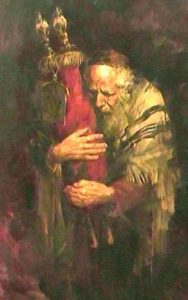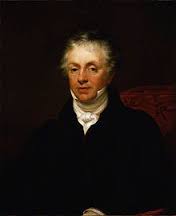The Law of the LORD is perfect
Mount Calvary Church
Eutaw Street and Madison Avenue
Baltimore, Maryland
A Roman Catholic Parish of
The Personal Ordinariate of St. Peter
Anglican Use
Rev. Albert Scharbach, Pastor
Dr. Allen Buskirk, Choirmaster
Midori Ataka, Organist
Sunday, February 9, 2020
Sexagesima
8:00 AM Said Mass
10:00 AM Sung Mass
Brunch to follow in undercroft
__________________
Organ Prelude
Voluntary IV, William Boyce
Organ Postlude
Tis So Sweet to Trust in Jesus
___________________
Common
Merbecke
___________________
Anthems
Teach me, O Lord, Thomas Attwood (1765-1838)
Teach me, O Lord, the way of thy statutes, and I shall keep it unto the end.
The son of a musician in the royal band, Attwood was born in London, probably in Pimlico. At the age of nine he became a chorister in the Chapel Royal, where he received training in music from James Nares and Edmund Ayrton. In 1783 he was sent to study abroad at the expense of the Prince of Wales (afterwards King George IV), who had been favourably impressed by his skill at the harpsichord. After two years in Naples, Attwood proceeded to Vienna, where he became a favourite pupil of Mozart. On his return to London in 1787 he held for a short time an appointment as one of the chamber musicians to the Prince of Wales.
In 1796 he was chosen as the organist of St Paul’s Cathedral, and in the same year he was made composer of the Chapel Royal. His court connection was further confirmed by his appointment as musical instructor to the Duchess of York, and afterwards to the Princess of Wales.[2] In January 1806, he played his own composition, Grand Dirge, on the organ for the funeral of Lord Nelson, the only piece specially written for the occasion. For the coronation of George IV, he composed a setting of the traditional anthem I was Glad, which was also used at the coronations of King William IV and Queen Victoria. The king, who had neglected him for some years on account of his connection with the Princess of Wales, now restored him to favour, and in 1821 appointed him organist to his private chapel at Brighton.
Soon after the institution of the Royal Academy of Music in 1823, Attwood was chosen to be one of the professors. He was also one of the original members of the Royal Philharmonic Society, founded in 1813. He wrote the anthem O Lord, Grant the King a Long Life for the coronation of William IV, and he was composing a similar work for the coronation of Queen Victoria when he died at his house at 75 Cheyne Walk, Chelsea, on 24 March 1838.
Attwood’s funeral took place at St Paul’s Cathedral on 31 March 1838. He is buried in the Cathedral, in the crypt, under the organ.
Attwood is now known only for a few short anthems; these include Teach me, O Lord (1797), O God who by the leading of a star (1814), Turn Thy face from my sins (1831), and Come, Holy Ghost (1834).[His compositions show the influence of his teacher Mozart, but also the Georgian tradition of English church music of his early training, producing a “union of styles” which remained influential throughout the 19th century.
_________
A new commandment, Thomas Tallis (1510-1585)
A new commandment give I unto you, saith the Lord, that ye love together, as I have loved you, that even so ye love one another. By this shall every man know that ye are my disciples, if ye have love one to another.
If ye love me and A new commandment show Tallis writing for the reformed rites of Edward VI and Elizabeth (who reinstated Edward’s First Prayer Book of 1549 when she came to the throne). They are examples of anthems which either use the word ‘commandment’ or refer to how one should live a godly life. This was especially important for Edward VI’s time when these anthems can be seen to reinforce the exhortation to godly living which was now explicit as a result of the Bible being read in English and a greater emphasis on preaching and teaching. Gone are the great soaring lines of the pre-Reformation where, from time to time, it was difficult to hear which word the choir was singing. Gone also is the impressive English treble voice. Instead Tallis produces beautiful four-part miniatures in two sections with the second section repeated in an ABB structure.
__________________
Hymns
#289 O God our help in ages past (ST. ANNE) is a paraphrase of Psalm 90 by Isaac Watt (1674—1748), the father of English hymnody. Before him only strict metrical translations of the psalms were used; he was the first to paraphrase psalms and scriptural passages. The antithesis between God and humanity is the primary message of Psalm 90 and Watts’ paraphrase: man is frail and mortal, God is strong and everlasting.
The hymn tune ST. ANNE was composed by William Croft in 1708 while he was the organist of the church of St. Anne, Soho. J. S. Bach’s Fugue in E-flat major BWV 552 is often called the “St. Anne” because of the similarity of its subject to the first line of the hymn tune, though there is some debate as to whether Bach used the actual tune after hearing it, or coincidentally created the very similar tune used as the fugal theme.
#429 Day by Day (SUMNER) is a prayer by St. Richard, bishop of Chichester. The tune is by Arthur Henry Biggs (1906-1954), organist at St. John the Evangelist Episcopal Cathedral in Spokane, Washington. The text became widely known because of its use by Godspell in a rousing setting.
#551 A mighty fortress is our God is from the German translation of Psalm 46 by Martin Luther. Leading Catholic liturgical scholar and musician Edward Foley calls Martin Luther “a model pastoral musician… a proponent and composer of music from the people and for the people, as evidenced in his chorales.” Speaking specifically of Ein’ feste Burg—the German title for “A mighty fortress”, Fr. Foley notes that this chorale “appears to be a paradigm of liturgical ‘people music.’” Luther’s “craft is affirmed by its ageless singability” — high praise from a Catholic scholar, indicating not only the quality of Luther’s work, but also its ecumenical popularity.

